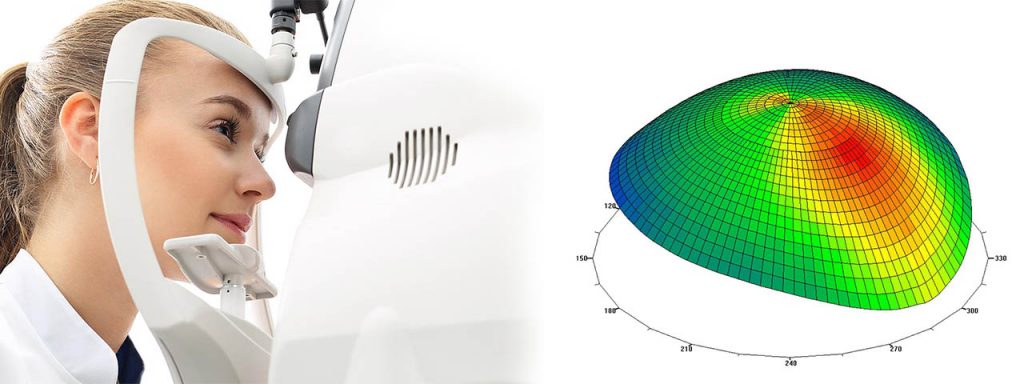Keratoconus is a progressive eye disease that weakens the cornea and changes its structure — leading to vision problems and even vision loss.
The cornea is the outermost layer of the eye that covers the pupil and iris. In a healthy eye, the cornea is clear and dome-shaped.
When keratoconus develops, the cornea becomes thinner and begins to bulge into a cone-like shape. This irregular shape causes blurry and distorted vision as the light that enters the eye can no longer focus accurately onto the retina.
Keratoconus generally causes mild to severe astigmatism and nearsightedness, but can also cause corneal swelling and scarring, and even vision loss.
The most effective treatment for keratoconus is a procedure called corneal cross-linking.
What is corneal cross-linking?
Corneal cross-linking is the most effective treatment for keratoconus as it strengthens the cornea by creating new bonds between the collagen fibers in the center of the cornea. These new bonds help to stiffen the cornea, support its circular shape and provide extra resistance to the effects of worsening keratoconus.
Corneal cross-linking is the only treatment method that can stop keratoconus from worsening and reduce your chances of a corneal transplant later on in life.
Cross-linking may also be used to treat severe corneal ulcers and infections that are unresponsive to antibiotics.
In some cases, eye doctors may also recommend corneal cross-linking to strengthen the cornea prior to undergoing LASIK eye surgery.
How is corneal cross-linking performed?
Cross linking is an in-office procedure that involves exposing the collagen fibers of the cornea to ultraviolet (UV) light.
There are two different types of procedures:
- Epithelium-off (epi-off). During this procedure, the epithelium is completely removed to allow the collagen fibers to be fully exposed to the UV light.
- Epithelium-on (epi-on). This procedure is less invasive, as the epithelium is loosened, instead of removed completely.
During both procedures, an eye drop of liquid riboflavin (vitamin B2) is applied to the surface of the eye. The eye is then exposed to the UV light at varying levels of time and intensity, to be absorbed by the cornea.
The UV light functions to stabilize the collagen fibers in the cornea and slow the progression of disease.
The epi-off procedure has proven to be 95 percent effective in stopping the progression of keratoconus.
The epi-on procedure is also effective, though the long term effects are still being studied.
If you suspect you have an eye condition, contact an eye doctor near you, who can diagnose and treat the condition.
SEE RELATED: Keratoconus
Is corneal cross-linking recommended for all patients?
Corneal cross-linking is generally recommended for patients in the beginning stages of keratoconus. This is generally due to the fact that the cornea at this point is not yet significantly irregularly shaped and any vision problems that have developed are generally not severe.
When corneal cross-linking is performed in the early stages of keratoconus, this treatment can help to prevent further corneal distortions and the need for specialized contact lenses
Are you a candidate for corneal cross-linking?
To determine if you are a good candidate for a cross-linking procedure, your eye doctor will assess your cornea’s shape and thickness using a corneal topography test. This test provides a detailed, color-coded map of the layers and shape of your cornea.
Your eye doctor will also measure your visual acuity, and examine your general eye health.
What to expect during your corneal cross-linking procedure
This outpatient procedure typically takes about an hour to complete, although the duration may vary depending on the procedure used.
After the procedure, your eye doctor will place a special contact lens on your eye to protect your cornea while it heals. You will also be given a prescription for an antibiotic and anti-inflammatory eye drop to prevent infection and post-operative swelling.
To reduce your risk of complications, follow your eye doctor’s instructions on self-care and take all your medications as prescribed.
Corneal cross-linking is an effective solution for patients with keratoconus.
LEARN MORE: Guide to Corneal Conditions
Schedule an appointment with an eye doctor for a comprehensive eye exam, and to discuss any questions you may have about treating your keratoconus.
If you have been diagnosed with keratoconus, speak with your doctor for more information on how corneal cross linking (CXL) can help you.

